�
The Science of the Blockchain
Roger Wattenhofer
�
Copyright c 2016 by Roger Wattenhofer
First Edition 2016
Inverted Forest Publishing
ISBN-13 978-1522751830
ISBN-10 1522751831
�
Preface
When hanging out with colleagues from financial technology (Fin-
Tech), you cannot help but notice that the so-called blockchain is
all the rage, almost as important as the Internet. Some FinTech
colleagues seem to understand the blockchain as a magic piece of
code that allows the participants of a distributed system to agree
on a common view of the system, to track changes in the system.
In the distributed systems community, agreement techniques have
been known long before cryptocurrencies such as Bitcoin (where
the term blockchain is borrowed) emerged. Various concepts and
protocols exist, each with its own advantages and disadvantages.
The idea of this book is to give a scientifically precise overview
of the most interesting approaches that have emerged in the past
few decades. If you are a developer (in FinTech or not), this book
will help you to get a better understanding what is right and what
is wrong for your distributed system, what is possible and what is
not.
This Book
This book introduces the basic techniques when building fault-
tolerant distributed systems. We will present different protocols
and algorithms that allow for fault-tolerant operation, and we will
discuss practical systems that implement these techniques.
The book presents the main ideas independently from each
other, each topic has its own chapter. Each chapter starts with an
introductory story that motivates the content of the chapter. Al-
gorithms, protocols and definitions are presented formally, so that
you know how to implement the ideas. Some insights are proved
in theorems, so that you learn why the concepts or algorithms are
correct, and what they can guarantee. Most of the other text is
iii
�
iv
presented as so-called remarks. These remarks discuss various in-
formal thoughts, and often set the stage for the next idea. However,
one will get the essence of each chapter even without reading any
of these remarks. Each chapter also discusses the history of the
ideas presented in the chapter, so that you can find the original
research.
In this book, we will see different models (and combinations of
models) that may make sense in different scenarios. The focus of
the book is on protocols and systems that matter in practice. In
other words, we do not discuss concepts because they are fun, but
because they are practically relevant.
Nevertheless, have fun!
�
Contents
1 Introduction
1.1 What are Distributed Systems? . . . . . . . . . . . .
1.2 Book Overview . . . . . . . . . . . . . . . . . . . . .
1
1
2
2 Fault-Tolerance & Paxos
2.1 Client/Server . . . . . . . . . . . . . . . . . . . . . .
2.2 Paxos
5
5
. . . . . . . . . . . . . . . . . . . . . . . . . . 10
3 Consensus
17
3.1 Two Friends . . . . . . . . . . . . . . . . . . . . . . . 17
3.2 Consensus . . . . . . . . . . . . . . . . . . . . . . . . 18
Impossibility of Consensus . . . . . . . . . . . . . . . 18
3.3
3.4 Randomized Consensus
. . . . . . . . . . . . . . . . 25
3.5 Shared Coin . . . . . . . . . . . . . . . . . . . . . . . 29
4 Byzantine Agreement
33
4.1 Validity . . . . . . . . . . . . . . . . . . . . . . . . . 34
4.2 How Many Byzantine Nodes? . . . . . . . . . . . . . 35
4.3 The King Algorithm . . . . . . . . . . . . . . . . . . 38
. . . . . . . . . 40
4.4 Lower Bound on Number of Rounds
4.5 Asynchronous Byzantine Agreement
. . . . . . . . . 40
5 Authenticated Agreement
45
5.1 Agreement with Authentication . . . . . . . . . . . . 45
5.2 Zyzzyva . . . . . . . . . . . . . . . . . . . . . . . . . 47
6 Quorum Systems
61
6.1 Load and Work . . . . . . . . . . . . . . . . . . . . . 62
6.2 Grid Quorum Systems . . . . . . . . . . . . . . . . . 64
6.3 Fault Tolerance . . . . . . . . . . . . . . . . . . . . . 66
6.4 Byzantine Quorum Systems . . . . . . . . . . . . . . 70
v
�
vi
CONTENTS
7 Eventual Consistency & Bitcoin
77
7.1 Consistency, Availability and Partitions
. . . . . . . 78
7.2 Bitcoin . . . . . . . . . . . . . . . . . . . . . . . . . . 79
7.3 Smart Contracts
. . . . . . . . . . . . . . . . . . . . 87
7.4 Weak Consistency . . . . . . . . . . . . . . . . . . . 91
8 Distributed Storage
95
8.1 Consistent Hashing . . . . . . . . . . . . . . . . . . . 95
8.2 Hypercubic Networks . . . . . . . . . . . . . . . . . . 97
8.3 DHT & Churn . . . . . . . . . . . . . . . . . . . . . 105
�


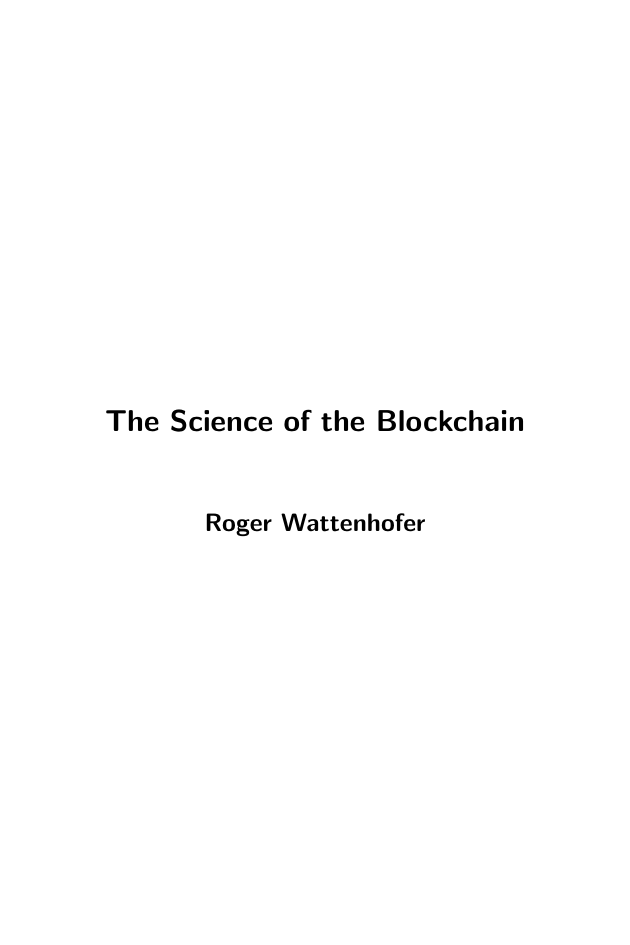

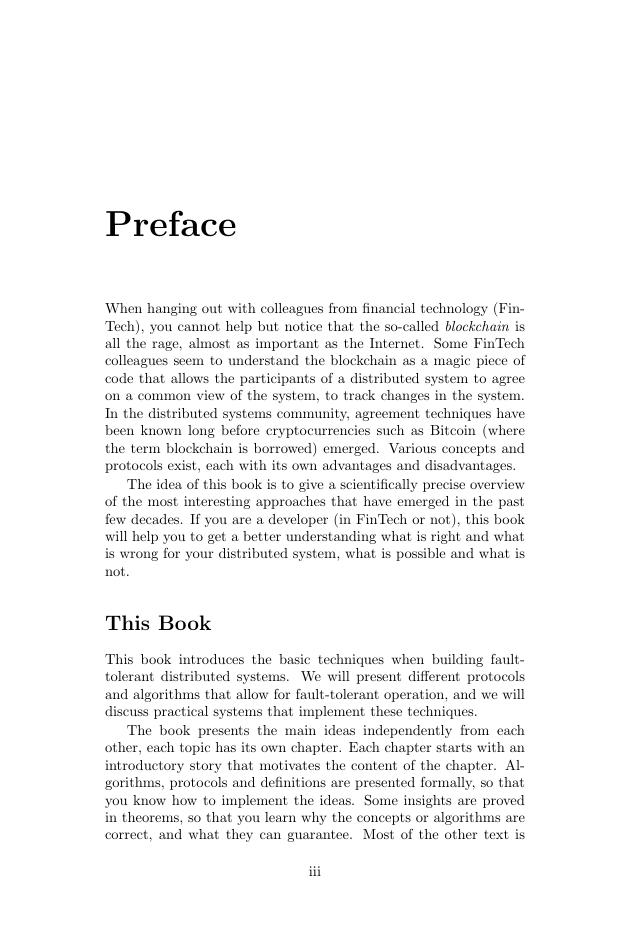
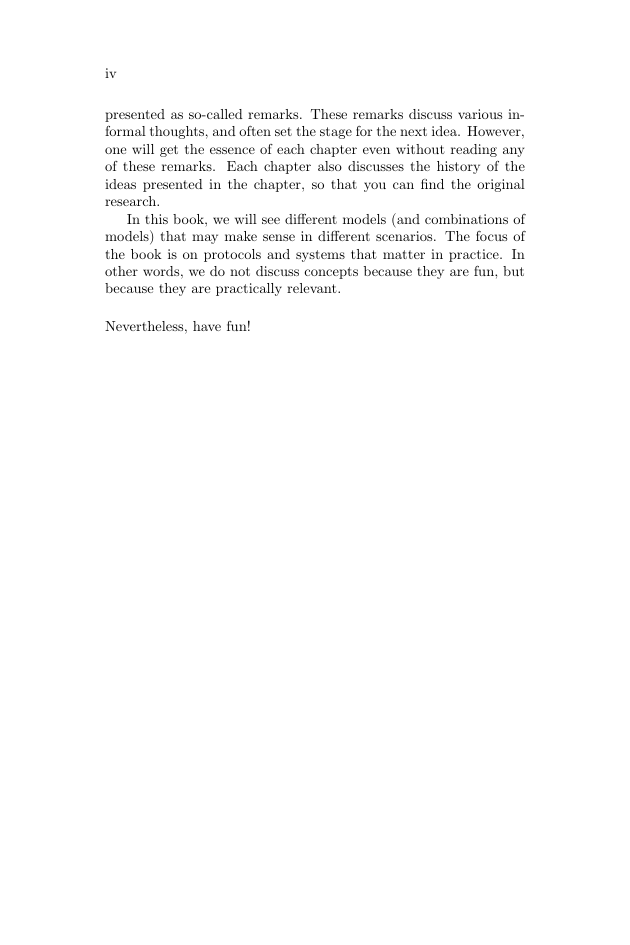
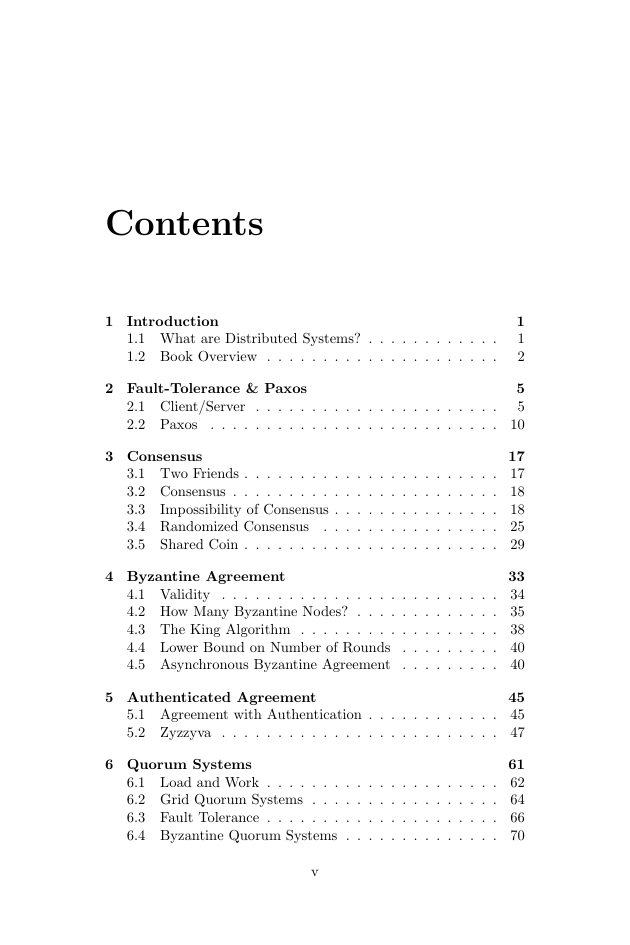
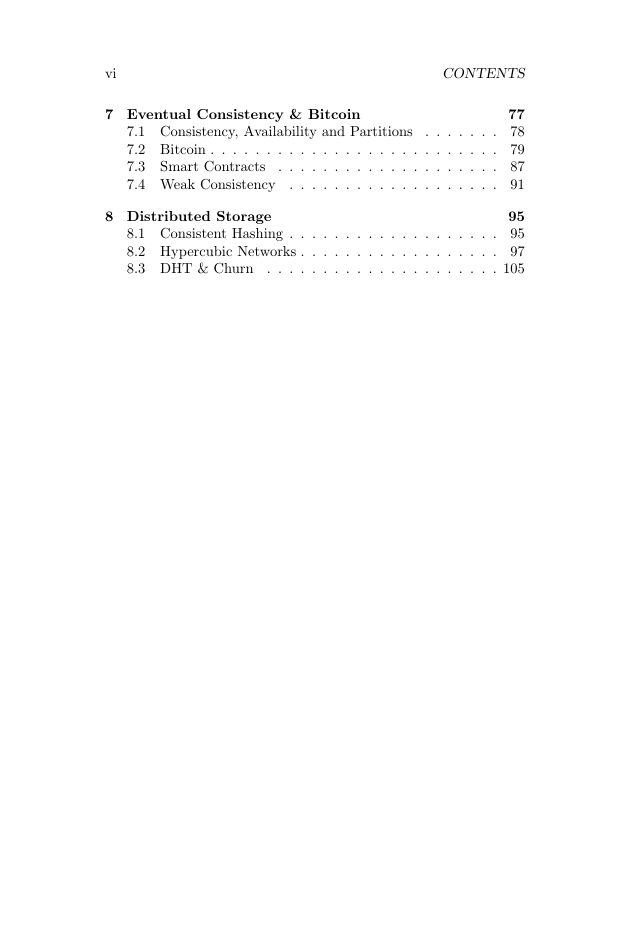








 2023年江西萍乡中考道德与法治真题及答案.doc
2023年江西萍乡中考道德与法治真题及答案.doc 2012年重庆南川中考生物真题及答案.doc
2012年重庆南川中考生物真题及答案.doc 2013年江西师范大学地理学综合及文艺理论基础考研真题.doc
2013年江西师范大学地理学综合及文艺理论基础考研真题.doc 2020年四川甘孜小升初语文真题及答案I卷.doc
2020年四川甘孜小升初语文真题及答案I卷.doc 2020年注册岩土工程师专业基础考试真题及答案.doc
2020年注册岩土工程师专业基础考试真题及答案.doc 2023-2024学年福建省厦门市九年级上学期数学月考试题及答案.doc
2023-2024学年福建省厦门市九年级上学期数学月考试题及答案.doc 2021-2022学年辽宁省沈阳市大东区九年级上学期语文期末试题及答案.doc
2021-2022学年辽宁省沈阳市大东区九年级上学期语文期末试题及答案.doc 2022-2023学年北京东城区初三第一学期物理期末试卷及答案.doc
2022-2023学年北京东城区初三第一学期物理期末试卷及答案.doc 2018上半年江西教师资格初中地理学科知识与教学能力真题及答案.doc
2018上半年江西教师资格初中地理学科知识与教学能力真题及答案.doc 2012年河北国家公务员申论考试真题及答案-省级.doc
2012年河北国家公务员申论考试真题及答案-省级.doc 2020-2021学年江苏省扬州市江都区邵樊片九年级上学期数学第一次质量检测试题及答案.doc
2020-2021学年江苏省扬州市江都区邵樊片九年级上学期数学第一次质量检测试题及答案.doc 2022下半年黑龙江教师资格证中学综合素质真题及答案.doc
2022下半年黑龙江教师资格证中学综合素质真题及答案.doc